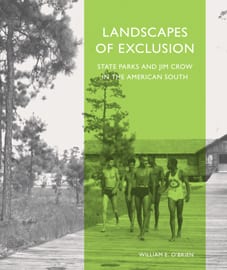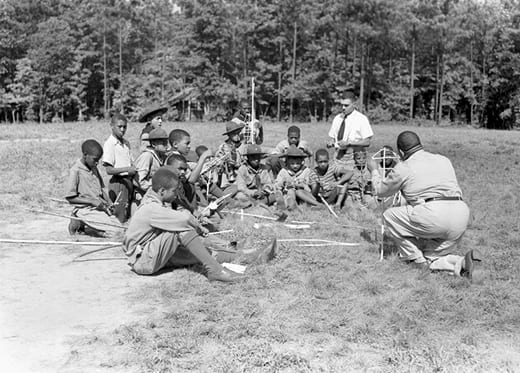FORTHCOMING: LANDSCAPES OF EXCLUSION
 The state parks movement sought to expand public access to scenic places throughout the nation. But in the South, severe racial restrictions, known broadly as “Jim Crow” laws, barred African Americans from using state parks. When the New Deal of the 1930s spurred a massive wave of park expansion, the National Park Service built segregated state parks for African Americans in Jim Crow states. These parks were segregated and typically substandard in relation to “whites only” areas.
The state parks movement sought to expand public access to scenic places throughout the nation. But in the South, severe racial restrictions, known broadly as “Jim Crow” laws, barred African Americans from using state parks. When the New Deal of the 1930s spurred a massive wave of park expansion, the National Park Service built segregated state parks for African Americans in Jim Crow states. These parks were segregated and typically substandard in relation to “whites only” areas.
When, after World War II, civil rights advocates filed federal lawsuits demanding park integration, southern park agencies expanded access to more segregated facilities, but the courts consistently ruled in favor of integration, leading to the end of state park segregation by the mid-1960s. Even though it has largely faded from public awareness, the imprint of segregated state park design remains visible throughout the South.

William E. O’Brien, Ph.D., associate professor of environmental studies at the Harriet L. Wilkes Honors College of Florida Atlantic University, illuminates this history in the first-ever study of state park segregation, slated for publication by LALH and the University of Massachusetts Press in 2015. Emphasizing the historical trajectory of events leading to integration, O’Brien’s book underscores the profound inequality that persisted for decades in the number, size, and quality of state park spaces provided for black visitors across the Jim Crow South. O’Brien is associate professor of environmental studies at the Harriet L. Wilkes Honors College of Florida Atlantic University